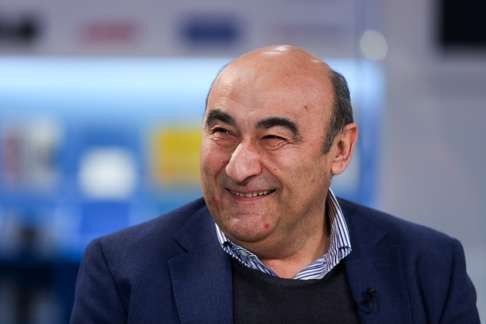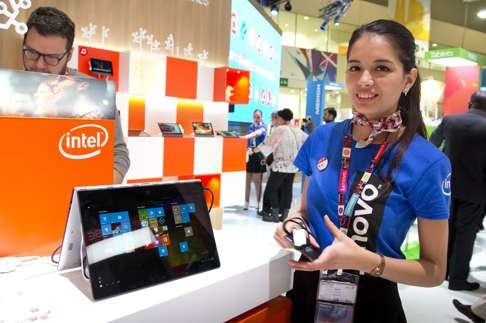
China’s Lenovo chases ‘new growth phase’ with sweeping revamp but investors may need more convincing
Group is restructuring its personal computer and enterprise businesses, pivoting to become more customer-centric

Chinese technology giant Lenovo Group unveiled a sweeping organisational revamp on Friday that it hopes will help boost sales and drive innovation, especially in personal computers, mobile devices and data centre equipment.
Chairman and chief executive Yang Yuanqing said the changes, which will take effect on April 1, would “ultimately drive Lenovo into a new phase of growth”.
“We must further accelerate our transformation into a customer-centric company,” Yang said.
The latest reorganisation plan of the world’s largest personal computer supplier apparently did not provide investors with much confidence.
Lenovo’s shares fell 3.39 per cent to finish at HK$6.27 (US$0.81) on Friday, its lowest close since hitting HK$6.18 on September 29 last year.
The company’s personal computer business group is being restructured to become the personal computer and smart device group, led by Lenovo president and chief operating officer Gianfranco Lanci.
This business unit will be responsible for delivering personal computers, laptops with detachable keyboards, tablets, large-screen phablets, gaming devices and smart home products across the established Windows, Chrome and Android software platforms.
Bryan Ma, vice-president of client devices research at IDC, said the inclusion of tablets and phablets in that group “made sense because tablets are more closely aligned within the personal computing space”.
Lenovo’s enterprise business group will be changed to the data centre group, focused on the high-growth hyperscale market.
Hyperscale refers to a more flexible computing architecture that allows servers, storage, networking and software inside data centres to support the increased demand for cloud computing activities without requiring more physical space, cooling or electrical power.
Data centres are secure, temperature-controlled facilities built to house large-capacity servers and data-storage systems, and feature multiple power sources and high-bandwidth internet connections.
The data centres run by the likes of Facebook, Google and Amazon use customised hyperscale computing systems.
Gerry Smith will serve as president of Lenovo’s data centre group. Peter Hortensius, currently Lenovo’s global chief technology officer, will join this new business unit as both its chief technology officer and head of strategy.
Zhou Qingtong, Lenovo’s global chief information officer, will concurrently serve as this business unit’s chief financial officer.
Last month, Smith said Lenovo’s enterprise equipment business was being driven by wins in mainland China with the country’s “big three” internet players - Baidu, Alibaba Group and Tencent Holdings.
Lenovo’s mobile business group will now be headed by co-presidents Chen Xudong and Aymar de Lencquesaing.
Chen will focus his efforts on mainland China, the world’s largest smartphone market. The international markets will be led by de Lencquesaing, formerly the head of Lenovo North America.
Lost in this reshuffle is Rick Osterloh, who has left his roles as president and chief operating officer at Motorola Mobility.
His departure followed Lenovo’s US$300 million write-off of its smartphone inventory last year as part of a mobile business reorganisation in August.
The ecosystem and cloud services group of Lenovo will become its capital and incubator group, focused on spin-offs and investments in start-ups. It will be led by George He.
Bernstein Research senior analyst Alberto Moel described the incubator group as “a me-too move since everybody else is doing the same thing”.
Lenovo is forecast to record a modest year-on-year increase in total revenue to US$46.67 billion in its current fiscal year that ends on March 31, according to Bernstein.

